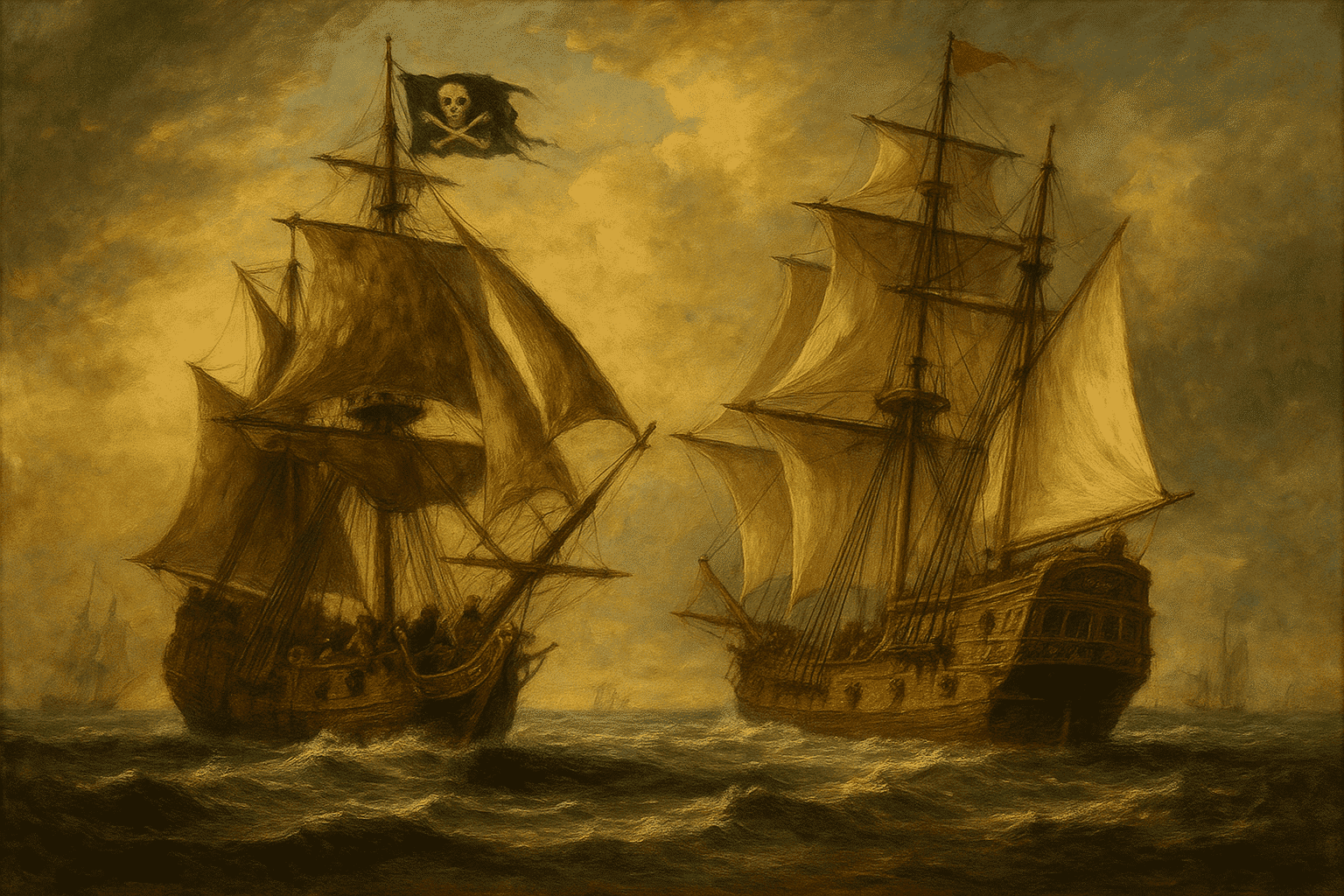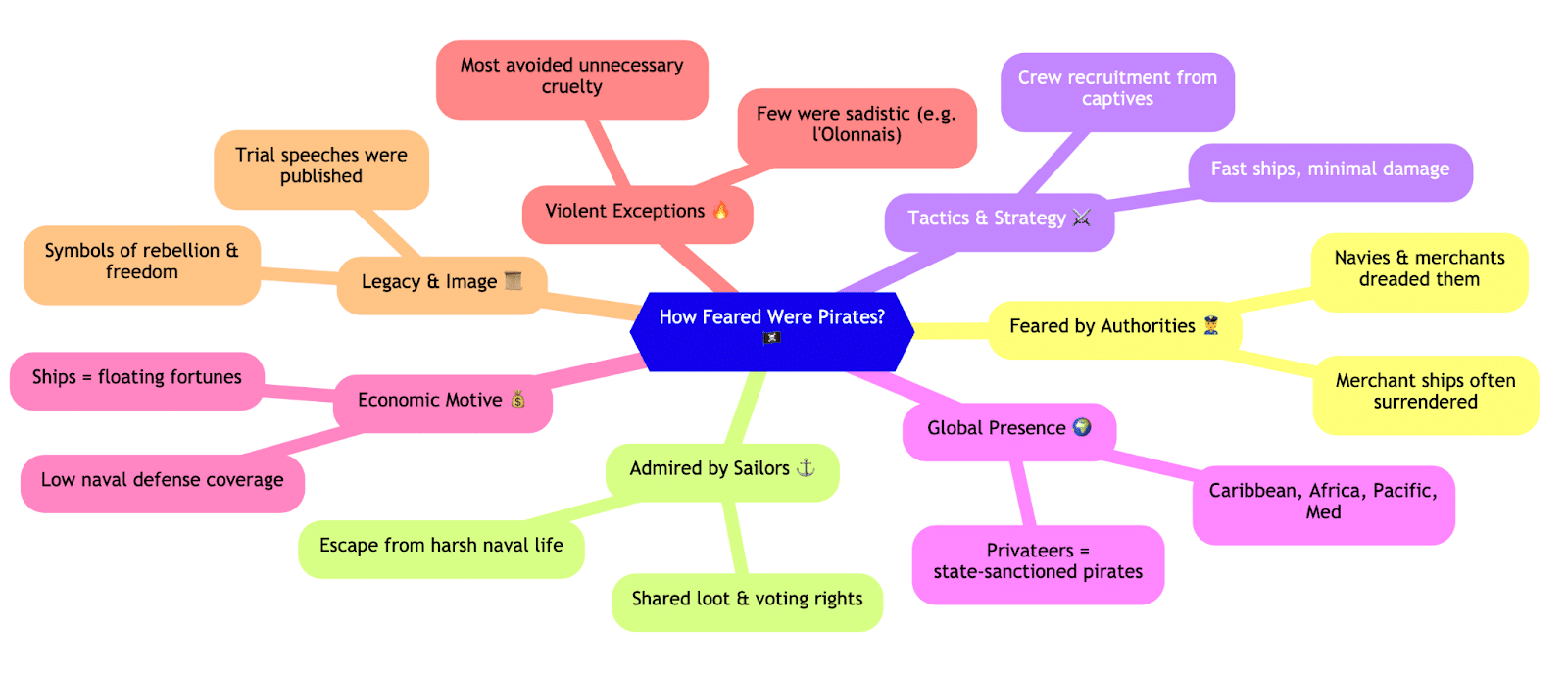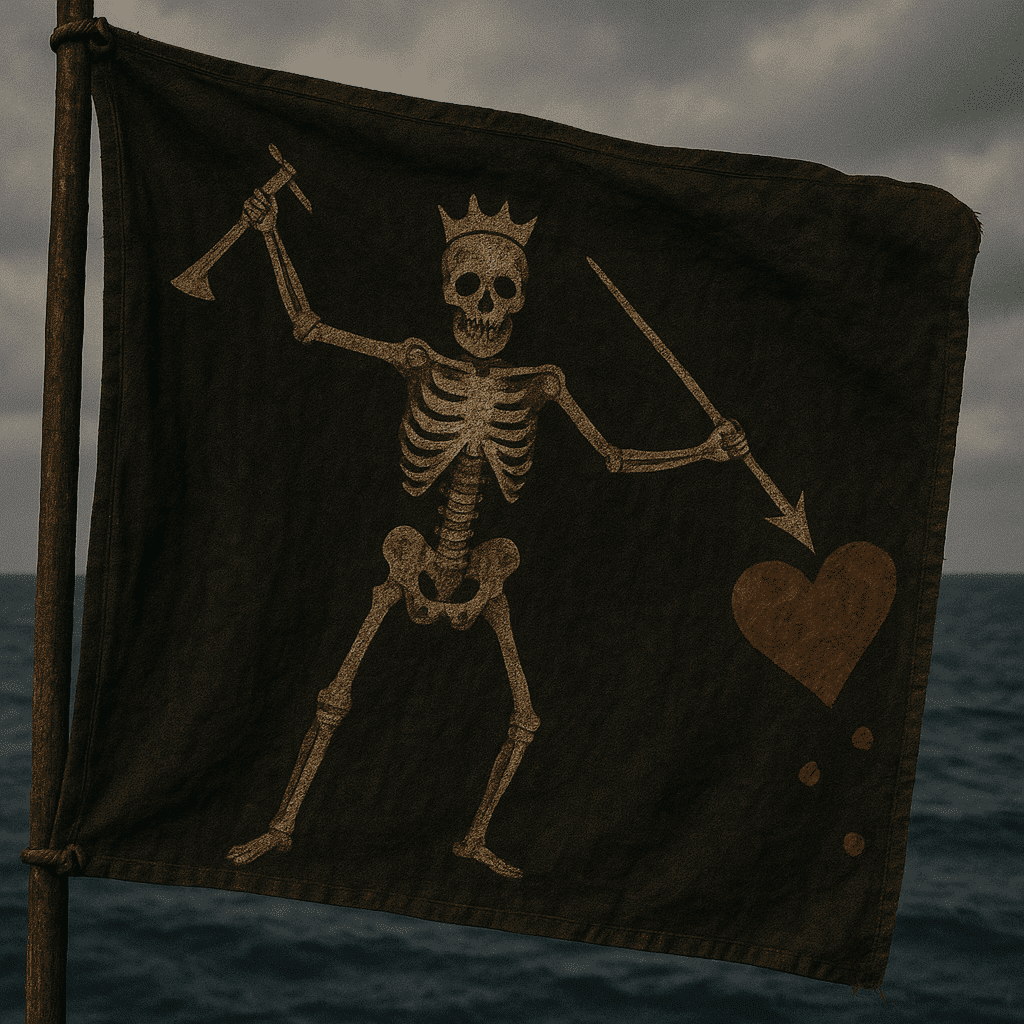Sign up with NauticEd for FREE (no obligation) and receive 2 free boating courses, a free eLogbook and boating resume, and more! If you want to get started in boating or are experienced and want to expand your knowledge and skills, consider taking our many online sailing and powerboating courses.
How Feared Were the Pirates?
When we picture pirates, it’s easy to get caught up in the Hollywood fantasy—cannon battles, buried treasure, parrots on shoulders. But the reality, especially during the Golden Age of Piracy in the Caribbean, was more nuanced and arguably more fascinating. Pirates were feared, yes—but by whom, and why, tells a deeper story.
Merchant ship captains and the navies of the world absolutely feared and hated pirates. But oddly enough, the average sailor didn’t. In fact, many sailors looked at pirates and saw a better deal. Pirate ships were some of the earliest working democracies in the New World. Crews elected their captains and could vote to remove them. Loot was shared. Decisions were made collectively. Compared to the brutal discipline and starvation-level pay on merchant ships or navy vessels, piracy looked like freedom and opportunity.
And pirates weren’t attacking ships in dramatic, cannon-blazing style either. They used smaller, faster ships to outrun and outmaneuver larger ones. Their goal was to overtake merchant vessels quickly, with as little damage to the cargo (or risk to themselves) as possible. And most merchant ships didn’t put up a fight. Why would they? These were poorly paid, poorly treated sailors, often beaten and half-starved by their captains. When pirates came aboard, they would often ask the crew how their officers treated them—and if the answer was “badly,” those officers might not live to tell the tale. The crew, on the other hand, might be invited to join the pirates. Better pay, a voice in decisions, a shot at treasure. You can see how this snowballed.
Piracy was global—anywhere commerce traveled without military escort, pirates followed. The Western Pacific, Indian Ocean, Mediterranean, West Africa, the Caribbean, South America—every region had its own flavor of piracy or privateering (which was basically piracy with a state-issued permission slip). And it wasn’t just about numbers. It was about economics. A single warship could barely defend a ten-mile radius if winds were fair. Meanwhile, thousands of ships were sailing the globe with only a thousand or so warships available worldwide to protect them. The oceans are massive, and pirates took full advantage of that scale.
A single merchant ship was a floating fortune. The cargo alone could set you up for life. The ship’s hull, spars, ropes—everything had value. Even the crew could be ransomed, enslaved, or recruited. This is why piracy was worth the risk. It was high-stakes, high-reward. And many navy sailors knew it. Warships were staffed with professionals, but if you didn’t pay them well, there was always the risk they’d jump ship—literally—and become pirates.
Some pirates went further than theft. A few were brutal, terrifying figures. Captains like François l’Olonnais tortured captives in horrifying ways—cutting open chests, gnawing on hearts, burning faces, crucifying victims, hanging men by their genitals. These weren’t just scare tactics—they were spectacle, and they added to the fearsome reputation of pirates in places like the Caribbean and West Africa. But these extremes were the exception, not the rule. Most pirates understood that unnecessary cruelty brought curses and unrest—and kept them from getting new recruits.
Still, the idea that pirates were simply bloodthirsty criminals misses a big part of the picture. Pirates were savvy businessmen. Their ships were floating corporations with structure, contracts, shares, and procedures. They were also rebels, ex-soldiers, Jacobite refugees, and people who’d been chewed up and spit out by the system. In many ways, piracy was their revolt.
And let’s not forget the privateers—state-sponsored pirates like Henry Morgan who raided enemies on behalf of their governments, got rich doing it, and sometimes even wound up as colonial governors. These guys were legal until they weren’t, often flipping sides depending on the political winds.
In short, pirates were feared, but also admired. Their trials were public events, their speeches at the gallows published and read far and wide. They lived outside the system and, for many, represented a rare shot at freedom, power, and wealth.
Were they violent? Absolutely. Were they always evil? Far from it. Pirates were a product of their time—enterprising sailors in a world that left little room for fairness. And for a while, they rewrote the rules of the sea.
You can learn more with NauticEd

Sign up with NauticEd for FREE (no obligation) and receive 2 free boating courses, a free eLogbook and boating resume, and more! If you want to get started in boating or are experienced and want to expand your knowledge and skills, consider taking our many online sailing and powerboating courses.








